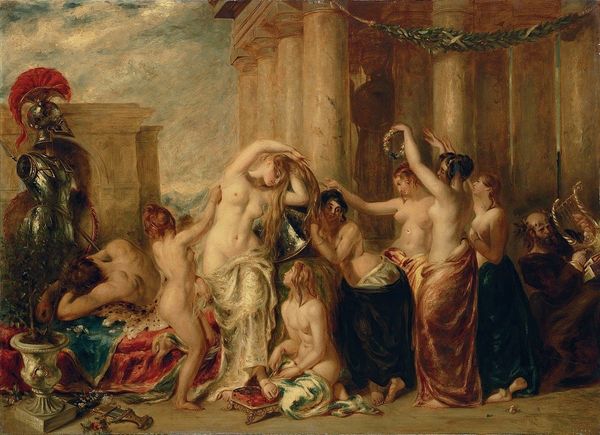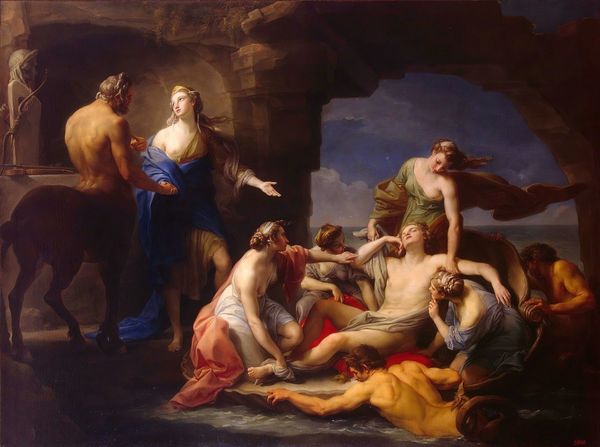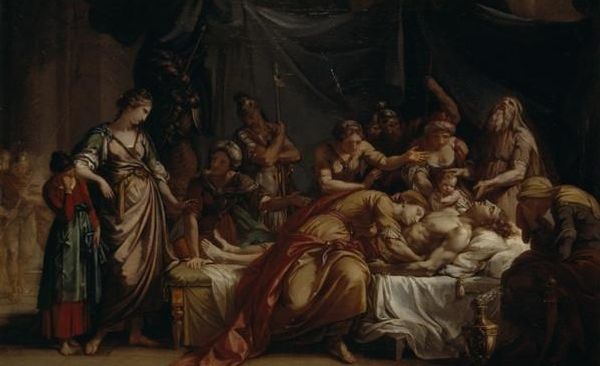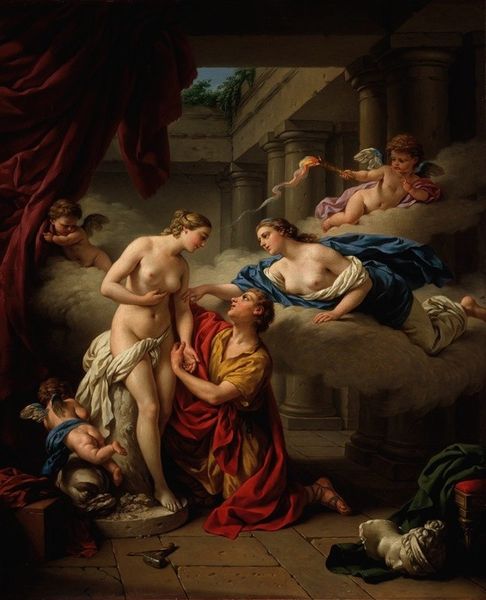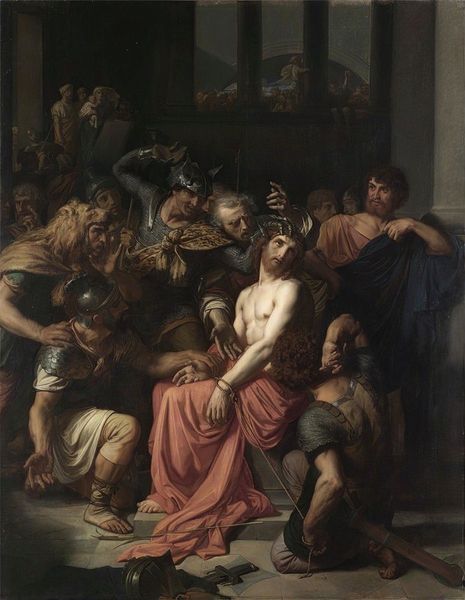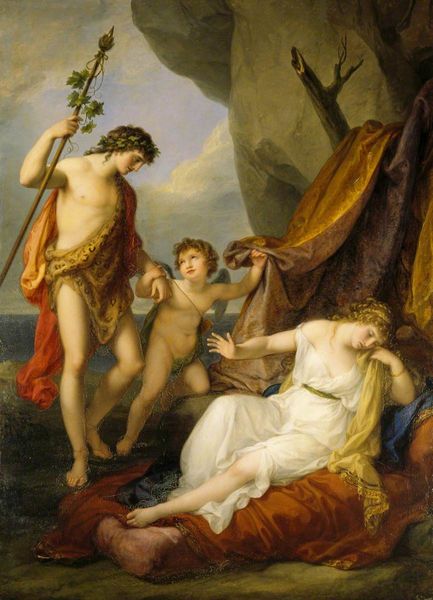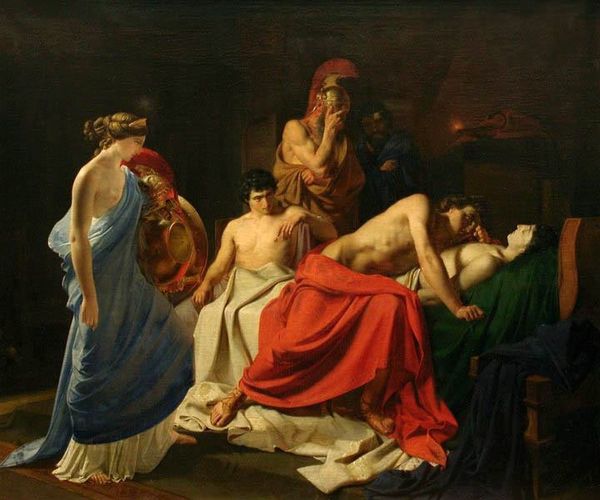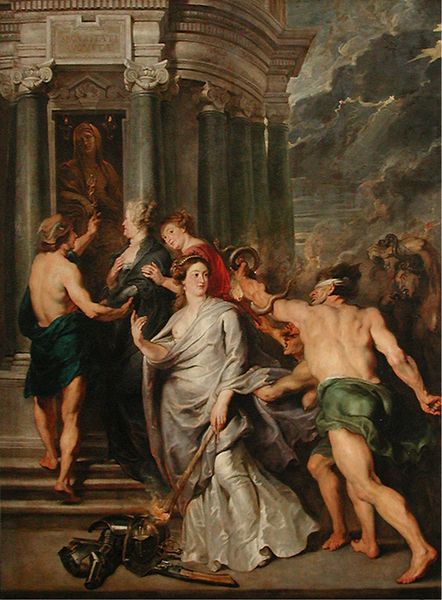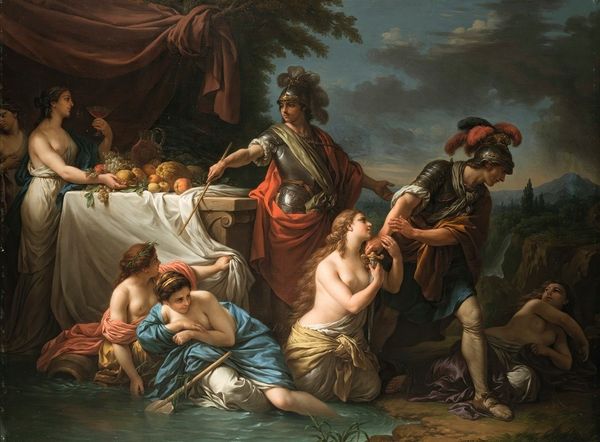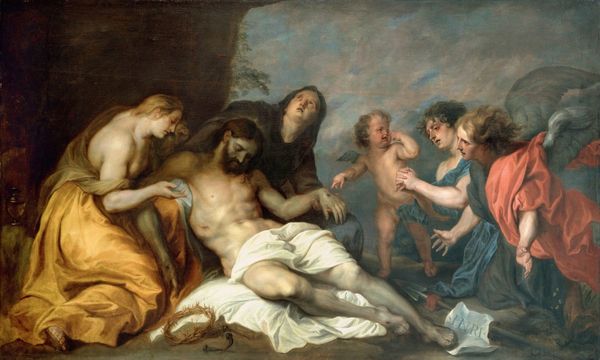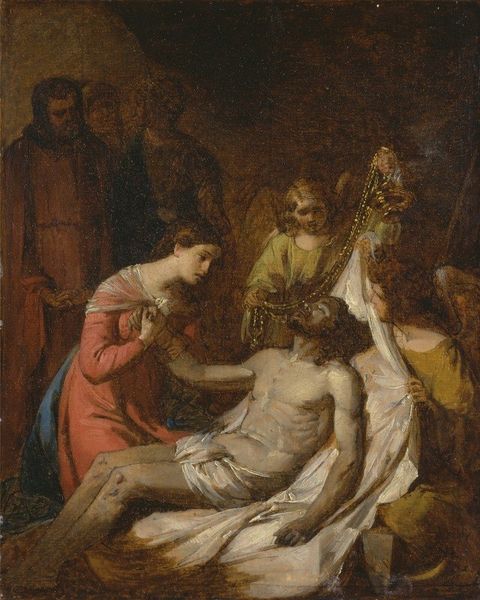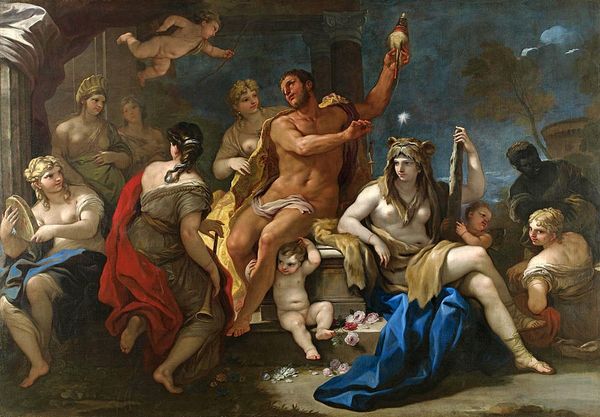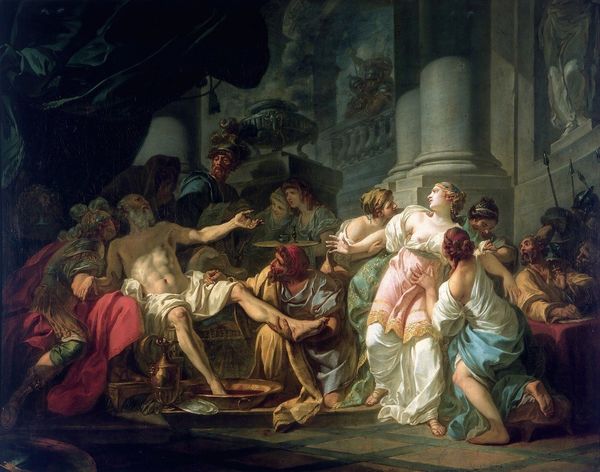
painting, oil-paint
#
neoclacissism
#
allegory
#
narrative-art
#
painting
#
oil-paint
#
figuration
#
oil painting
#
mythology
#
history-painting
Copyright: Public domain
Curator: I notice Gavin Hamilton's "The Death of Lucretia," painted in 1767. An oil on canvas. Its somber tones make it feel intensely tragic, almost staged. What are your initial thoughts on the painting's visual impact? Editor: I agree. The scene feels quite deliberate. I’m struck by the stark contrast between Lucretia’s pale skin and the deep reds and blues of the surrounding figures’ garments. And those figures themselves, grouped around the central event... it all seems very calculated. What do you see in terms of the painting's composition and use of color to convey its message? Curator: Indeed. Let’s examine the visual architecture. Observe the frieze-like arrangement of figures. It’s highly structured. Hamilton uses a limited color palette, prioritizing form over vibrancy. How does this restricted palette influence the painting's mood, would you say? Editor: It seems to enhance the solemnity and severity of the scene. The restrained colors seem to keep it from being melodramatic, somehow adding to the overall effect, reinforcing the moral weight of the event. The figures' postures are rigid. I’m curious; are they intended to act as moral allegories as well? Curator: Possibly. These carefully constructed postures echo classical sculptures, inviting reflection. Focus on Lucretia's languid pose and how it becomes a focal point due to light and line work. Could you explain how light manipulates the eye through each element? Editor: Yes, the strong chiaroscuro pulls us directly towards her. The way the light falls emphasizes the smoothness of her skin while simultaneously throwing the other figures into more harsh relief. Well, it really brings the full weight of this… this act of self-sacrifice into focus. The composition directs the viewers in terms of a very clear central event and the emotional turmoil following. It really guides my reaction to the work, honestly. Curator: Precisely. Thank you for illuminating these subtle arrangements, and how they add a unique quality of moral teaching from Neoclassical ideals.
Comments
No comments
Be the first to comment and join the conversation on the ultimate creative platform.
